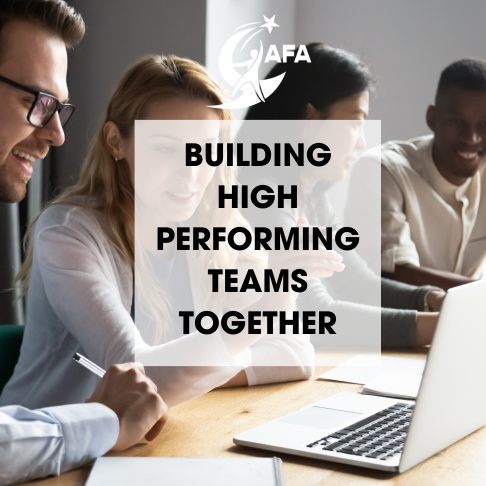Want an offsite in 2024 for your team? Or want to work on adapting your team culture? Schedule a call.

Avoid Delays. Deliver Value!
03/11/2021
I recently attended a webinar with Arie Bruckner as the guest speaker and in this talk on Agile Leadership he said the sole purpose of agility is avoiding delay. I would suggest that it is to avoid delay and deliver value. In the last 6 months I have been talking to various organizations who had an idea that they might want to work with me. Most of them decided they either weren’t ready or it wasn’t their cup of tea. We all know that I am an acquired taste but what threw them off was me honestly telling them that the reason to do any kind of transformation was to avoid delays and increase value.
One group had been trying to get a product to market for two years. I proposed a solution and when it came time to sign on the dotted line a confession came that they did not have the people to do the work. Another group had ideas and no direction. They had gotten funding and were hiring people without a focus on intent for the coming year. They decided that if my plan didn’t involve working with them full-time, then it wasn’t worth the money. And the third group had an erroneous idea of where they were and an inflated sense of their past success.
Were They Ready?
Now you may be reading this and thinking “she has sour grapes because she didn’t get the work.” In reality, I would not have written contracts for any of them. They were not ready to focus and work with an agile mindset and they definitely weren’t focused on avoiding delays and increasing value. However, out of all of this came a new program that I will be introducing in the next weeks about working with organizations from ideation to implementation to set their programs and products off in the right direction from the start. But what really triggered this?
A friend and colleague had sent me a link to an article about a failed government program. It was a 50 million dollar program that after 5 years yielded no results and left the program likely unsalvageable. They had gotten the funding based on a pitch of a solution to a socio-economic problem using technology and when it failed were quick to blame COVID for a large part of the failure. In talking to someone who worked in this space, I discovered that the solution they proposed and that was funded instead of the other 75 ideas that were pitched was using technology to solve the wrong problem in the wrong way. In fact, the solution to the problem was likely not even one that required the technology proposed. AND the solution was so clearly a result of people of privilege making decisions about and for those who are not as privileged. So I started asking myself some questions.
-
What was the problem they were trying to solve?
-
Were the right people in the room?
-
How did they arrive at the solution they proposed?
-
How did they contract the solution providers?
-
And were they working toward avoiding delays and increasing value?
And then this led me to look a little more at government programs. The failure rate and the over expenditure rate is astronomical. Delays in contracting, poorly written contracts, internal staff without the expertise to write the requirements, uninformed decision making, and big giant consultancies who have profited off of government inefficiencies all contribute to this problem. But what can we do about it?
Things Have to Change
For starters, the entire way in which the government does business has to change. The same could be said for other organizations including non-profits. I recently learned that the Catholic church in one European country had an excess of funds at the end of 2020. How does a church predicated on the idea of helping those in need have an excess in the millions?
Step One: What is the problem we are trying to solve?
To figure this out there has to be an open dialogue that extends beyond government officials in high ranking positions. The right people have to be at the table. Community leaders, social and justice groups, and the right people within organizations. Millennials, for example, need to have a bigger seat at the table. They are eager and capable of trying new ideas and raising the arguments that need to be made. They have demonstrated over and over again that they can turn the cultural norms on their heads.
Step Two: Create the hypothesis and conduct the experiment
Isn’t this what we would do in the scientific community? We would identify a problem and then create hypotheses and test them. When I was at university, I participated in a study to determine how many people were left or right brained. When they tested me, I came out 50/50. I already knew this. I live it. It is my truth. They were convinced the test had been administered incorrectly. It never dawned on them that their hypothesis was wrong. Organizations need to make use of tools like a business canvas to determine if they have enough information to move forward and then they need to test solutions - even if it is just to talk through the pros and cons or the outcomes to be achieved.
Step Three: Agree and commit to the priorities
Look at multiple solutions. Create pitches of the ideas for everyone to hear; not giant white papers of blah blah words. Discuss and then vote for the most viable solutions. And while doing this always keep in mind that we are trying to avoid delays and increase value. If decision-making happens in a vacuum then results will not represent the whole but the minority.
Step Four: Create a Team
We will be sharing some blogs and articles about teams and values. This step does not mean throwing a bunch of people at the problem who don’t have the capability or the time to commit. Too often we see people assigned to a new initiative with no thought to expertise or even if they have the bandwidth to do the work. This means assembling a team of the right people to do the right work of avoiding delays and increasing value (yes I will say that a few more times) who have the skills, knowledge, and most importantly the dedication to bring the idea to implementation successfully.
Step Five: Agile Ways of Working
If organizations do things the same old way then we will end up in the same place. The process has to change from the start which is procurement of services. If organizations do not employ lean procurement methods then it doesn’t matter how quickly an idea is vetted and voted into action, the product is doomed to delays. And this has to continue with how contracts are written and the relationships between the internal team and the external resources. Too many times we see internal teams who weren’t cut out to do the work or weren’t even interested just abdicate to the external sources. And let’s face it, many of them are more interested in the bottom line than in product delivery. Regardless of what framework or method you use to manage and track work again the goal is avoid delays and increase value. If you lose sight of that at any time, then things will start to go off the rails.
Is it that simple? Avoid Delays. Deliver Value.
This is a very simplistic overview of the problem and solution because the issue of non or poor delivery of solutions and the exorbitant costs of them is deep rooted. It will take a brave group to make the change that needs to be made with a strong exterior to weather the storms of change. However, the more an organization focuses on value and the less they focus on bureaucracy the better chance they have of succeeding. It all starts with choosing the right problem to solve and working until the solution that brings the most value for the customer is realized.
Are you ready to work with your team to create the culture that you want? Join us for one of our group coaching programs on teamwork and collaboration where we cover this and many other topics.
Learn More
About the Author:
 INDRA A. BOOKS
INDRA A. BOOKS
With 25 years of award-winning coaching and leadership experience, Indra has a passion for helping companies, teams, and individuals bring about meaningful, goal-oriented transformations which are firmly grounded in Agile principles. She currently works from Spain with companies around the world to achieve sustainable growth based on true agility; helping them make value-based changes and see results with high-performing teams.
Connect with us
 |
 |
 |
Search

WELCOME TO THE AGILITY FOR ALL LEARNING PORTAL
We offer loads of free information here in the blog and also in our
resource library
Agility for All provides coaching, consulting, and training programs. In addition to specialized consulting, you have the option to choose from:
- group coaching programs
- masterclasses
- 1-week intensive offsites
Our programs are designed to help your organization to:
- Maximize Employee Engagement
- Foster Self-Organization
- Encourage Innovation
- Attain Higher Performance
- Be More Agile
